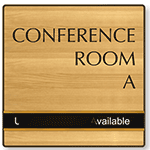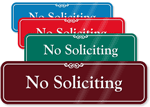A Colorado town insists on customer service training for everyone
What does a concerned top executive of a tourist association do when unhappy with visitor survey results? Train the entire town in customer service. Incredible as it may seem, this was exactly what Tom Kern, CEO of Steamboat Springs Chamber Resort Association, did when a survey revealed that while visitors liked Steamboat Springs, a resort town in Colorado, they were not enthusiastic enough to spread the word.

A tourist at Steamboat Springs. From Greg Younger.
Kern was bewildered that his friendly town was rated 70 out of 100 in the Net Promoter Score last year; the rating had dropped seven points from the previous survey in 2010.
The Net Promoter Score is derived from answers to a single question—How likely is it that you would recommend [your company] to a friend or colleague?—and the companies are ranked accordingly.
Kern realized that customers were unhappy about services at the town’s stores and restaurants, and visitors were deprived of an authentic, high-quality experience. Though the town was growing annually in sales tax collection, popular skiing destinations like Vail and Telluride fared better. And it was important that Steamboat Springs retained an identity apart from these and other tourist spots in Colorado like Aspen and Crested Butte.
To increase the town’s friendliness, which was supposedly being diluted as the town developed, Kern along with other businessmen came up with a unique proposal to train the entire town in customer service. Consultant, Ed Eppley, from Dublin, Ohio, was roped in for the training. Years back, Eppley’s program had helped improve telephone sales of a prominent resort, Steamboat Ski & Resort Corporation.
It took some effort for Eppley and Kern to coax reluctant business owners to attend the training. As Kelly Landers, 44, owner of Creekside Café, says, “I was pretty skeptical of Ed’s program when I was invited. I thought, ‘We already have great customer service. Why do I need to involve my employees?’”
The pilot training program was prepared for two groups comprised of restaurateurs, small-business owners, and municipal employees. Over month-long sessions, Eppley briefed these 25 trainees in customer-service thinking, and stressed “connection stack”—a system through which employees can find common ground with customers. He also encouraged service providers to go the extra mile and follow the example of Disney’s excellent customer service.
“We teach people how to have that proper conversation with a guest or client,” says Eppley. Even hiring employees fit for the role is essential. “Disney takes a long time to hire people. They do testing, they look at values—because it’s hard to keep that smiling face and be genuine if that’s not who you are,” Joseph Weintraub, the founder and faculty director of Babson College’s Coaching for Leadership and Teamwork Program says.
Although Steamboat Springs is one of a kind in its approach, other towns also strive for effective community tourism. In 2008, the city of Lindstrom in Minnesota collaborated with the Tourism Center’s Tourism Assessment Program (TAP) to conduct an inventory of the town’s assets, especially those that were related to its distinctive Swedish history and culture. The city has been continually implementing TAP’s recommendations to retain its “Little Sweden” image.
There are varying answers as to whether customer service training actually improves sales, and Steamboat Spring’s recent customer service survey is confusing. Up by six percent from last year, 53 percent of visitors gave the town’s friendliness a perfect 10 in the recent survey. But the town’s score slipped a further 67 percent in the latest Net Promoter Score survey. Nevertheless, the town will continue its training program and expand its businesses in the next year.
Category: Uncategorized













